Updated February 2025
You've probably thrown spaghetti at the wall to see what sticks when it comes to Facebook Ads. But that's the quickest way to waste ad spend on campaigns that don't perform to their full potential.
Let's get way more methodical than that and go right back to the start.
Setting up a Facebook ad account the best way to manage your campaigns easier and put your brand front and center across Facebook and Instagram.
Without a plan—a real strategy—you’ll never:
- know why things worked or failed (so you can end to the bad stuff and do more of the good stuff)
- be able to optimize your ads and get more bang for your buck)
- scale your campaigns (maintain those insane results as you increase your budget)
Instead of all that, we’re giving away the cream of the crop, the best of the best: 10 Facebook Ad strategies our PPC experts use to get click-through rates (CTR) to the likes of 400% and above.
TL;DR
By the End of This Article, You’ll Know How To:
- Build a strong foundation for your Facebook ads:
- Setting up a conversion funnel to guide your audience through every stage of the buyer journey.
- Creating realistic buyer personas to understand and target your ideal customers effectively.
- Segmenting your audience to deliver relevant offers for maximum engagement and conversions.
- Installing and leveraging the Facebook Pixel for smarter tracking and retargeting.
- Scale your Facebook ad performance:
- Combining Facebook Ads with Google Ads to cover the full funnel.
- Using content marketing to warm up cold leads.
- Testing formats like mobile ads, Instagram ads, giveaways, lead ads, multi-product ads, carousel ads, and video ads to maximize engagement.
- Lookalike Audiences to retarget and convert.
- DevImplementing advanced tactics like remarketing, dynamic ads, upselling, and eloping effective Facebook marketing strategies to improve engagement and conversions.
- Master the finishing touches:
- Optimizing bidding strategies for maximum ROI.
- Designing creatives tailored for mobile vs. desktop users.
- Running A/B tests to identify high-performing ads.
- 1. Set Up a Conversion Funnel
- 2. Create Realistic Buyer Personas
- 3. Segment Your Audience
- 1. Facebook Ads + Google Ads = A Match Made in Heaven
- 2. Facebook Ads + Content Marketing
- 3. Use Facebook Mobile Ads + Instagram Ads
- 4. Run A Free Giveaway Campaign
- 5. Build New Marketing Lists with Lead Ads
- 6. Maximize Results with Multi-Format Facebook Ads
- 7. Run a Profitable Upsell Campaign
- 8. Nurture Leads and Keep Customers Happy
- 9. Find New Prospects with Lookalike Audiences
- 10. Use the Mille Feuille Targeting Method
- Section 3: Finishing touches
- Improve Your Bidding Strategy
- Mobile Ads vs. Desktops Ads
- YOUR Best Advertising Strategies Will Be Revealed Over Time
Get brand new Facebook ad strategies straight to your inbox every week. 23,739 people already are!
We’ll start with four essential things you should do before setting up your first Facebook ad because, like all things, proper prep is key to brilliant execution.
- Set up a conversion funnel
- Create buyer personas
- Segment your market
- Install your tracking pixel
1. Set Up a Conversion Funnel
Think of your audience as people at different comfort levels of engagement with your brand. A conversion funnel organizes these relationships into tiers, from those just discovering your product (top of the funnel) to those ready to buy (bottom of the funnel). For example, someone who’s downloaded your eBook and attended a webinar is far more likely to purchase than a first-time ad viewer.
Effectively managing your Facebook Pages can also enhance audience engagement and inform your content publishing calendar.
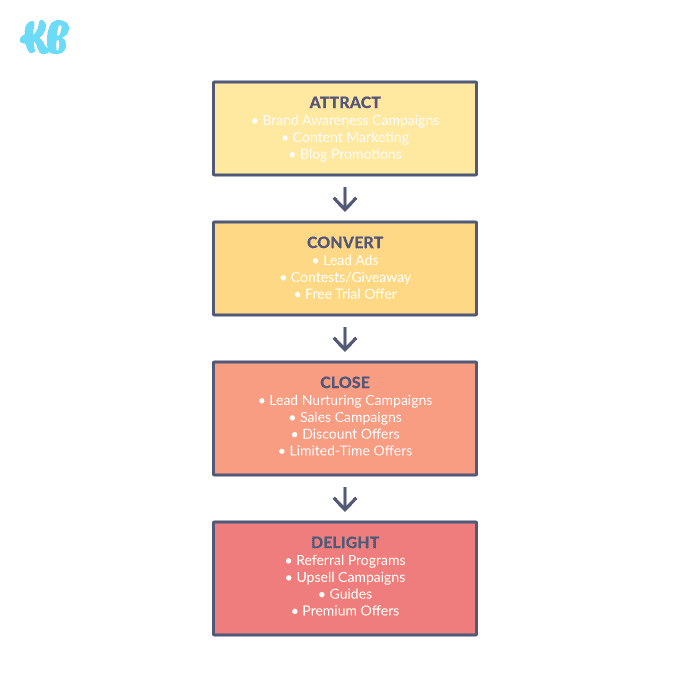
By aligning your campaigns with the four stages—attract, convert, close, and delight—you can guide your audience through the funnel:
- Identify target audiences.
- Develop stage-specific campaigns and offers.
- Use cross-channel strategies to nurture leads.
2. Create Realistic Buyer Personas
Understanding your ideal customer is critical to tailoring your campaigns. Define demographics, interests, and pain points to craft buyer personas that you can target directly. For example, Autopilot’s SaaS ad headline, "How to Nail Your SaaS Trial," directly addresses their audience's struggles. This precise targeting turns cold leads into warm prospects by matching messaging to their needs.
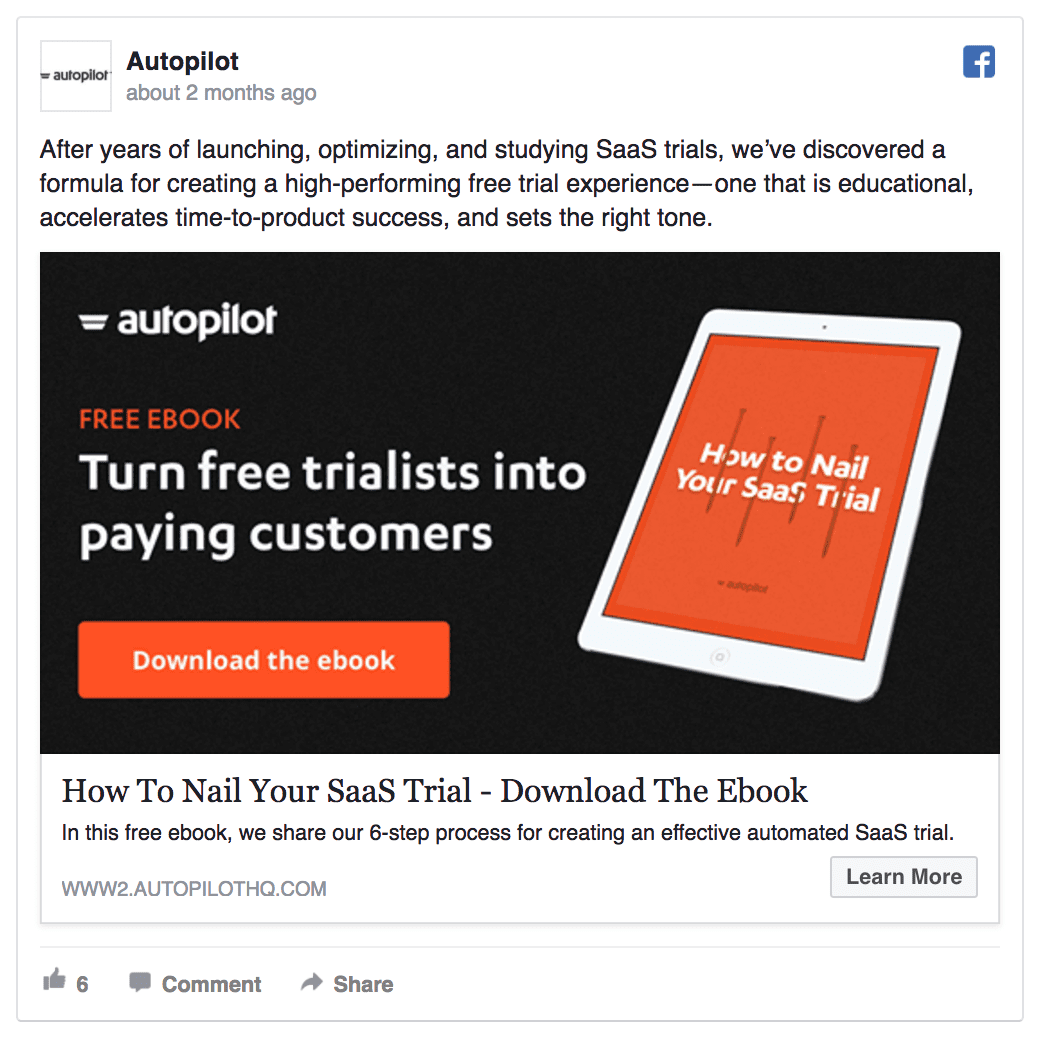
3. Segment Your Audience
Combine your funnel and buyer personas for precise targeting. Use segmentation to deliver relevant offers to groups like:
- Shopping cart abandoners: A nudge with a discount email can bring them back.
- Repeat customers: Engage loyal buyers with exclusive offers or referral programs.
- Lukewarm leads: Try discounts, like Try The World’s ad offering a deal to convert hesitant subscribers.
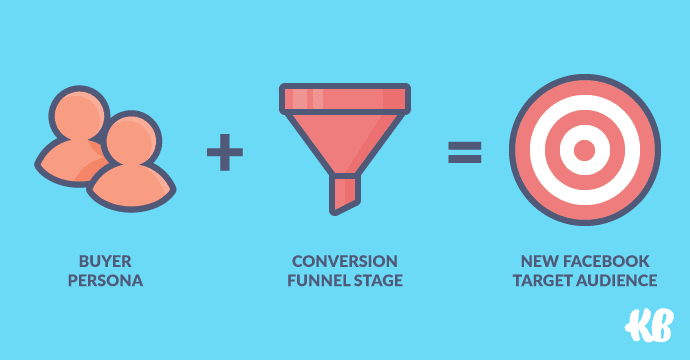
Retargeting
There are so many targeting options out there. Retargeting is one of the best. We've seen many brands succeed when they retarget different audience segments. And we're not the only ones:
Aurum Brothers achieved a 13x higher ROI on their Facebook ads when they retargeted past website visitors. A PR Newswire study brought attention to the link between retargeting and raising brand awareness. Retargeting represented the highest lift in trademark search behavior at a plucky 1,046%.
Once you understand your customer segments, your offers become more relevant. Your ad campaigns address a specific need or solve a common problem.
4. Install the Facebook Pixel
The Facebook Pixel is a tracking code that makes your ads more relevant by monitoring visitor behavior. While recent privacy updates have reduced its effectiveness, it remains essential for conversion tracking. The setup process is straightforward:
- Go to Events Manager and select Facebook Pixel.
- Copy the pixel code and add it to your website's header (or use a plugin like Insert Headers and Footers).
Further Reading: Facebook Pixel: Supercharge Your Facebook Ad Campaigns
Beyond basic tracking, you can set up custom events to measure actions like purchases and lead generation.
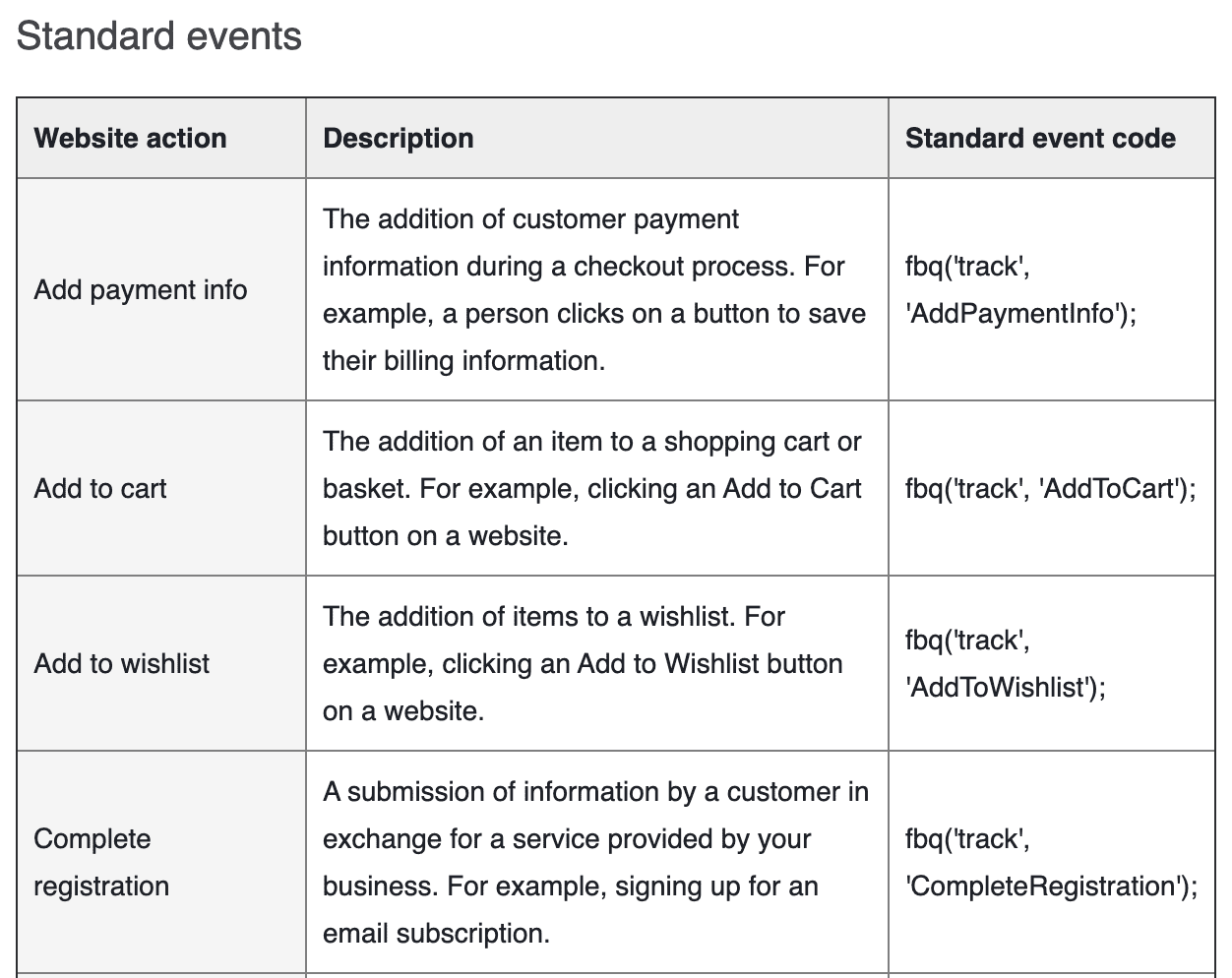
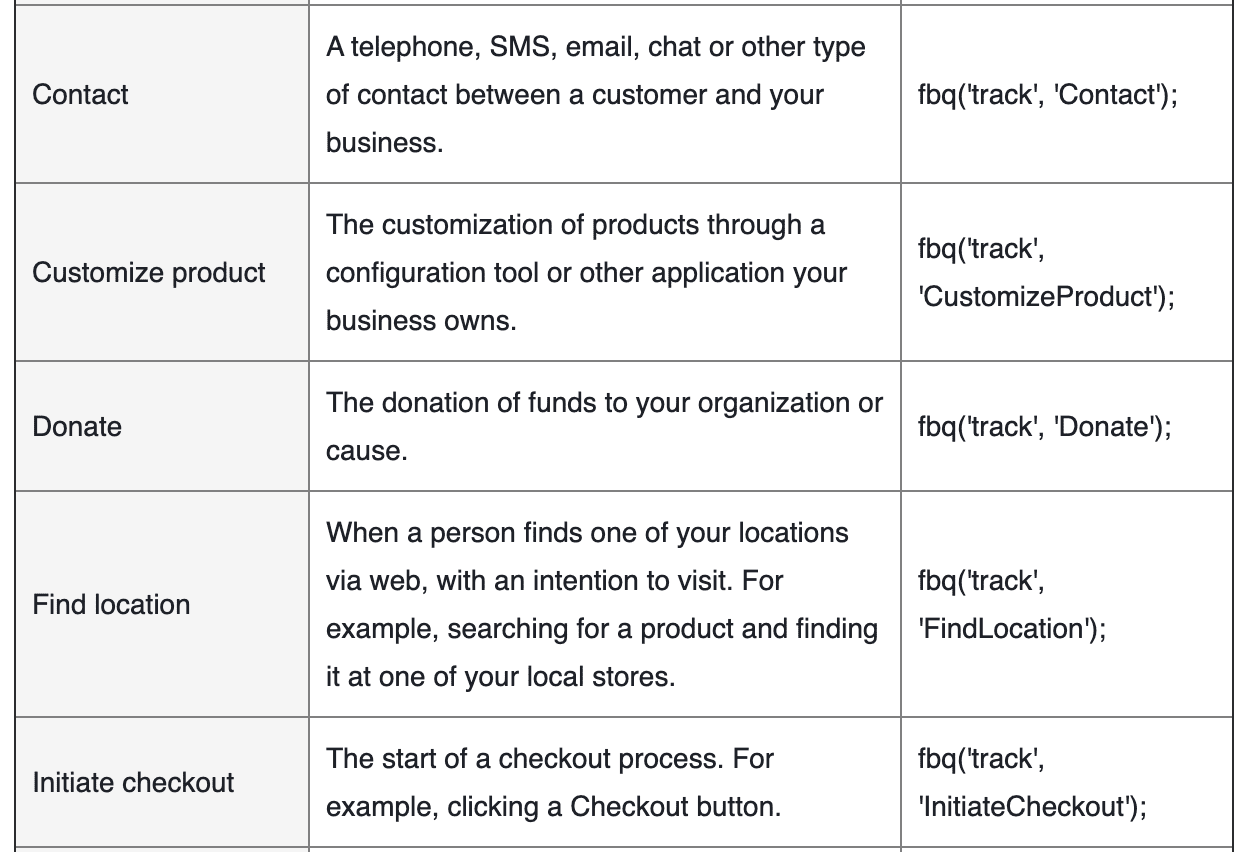
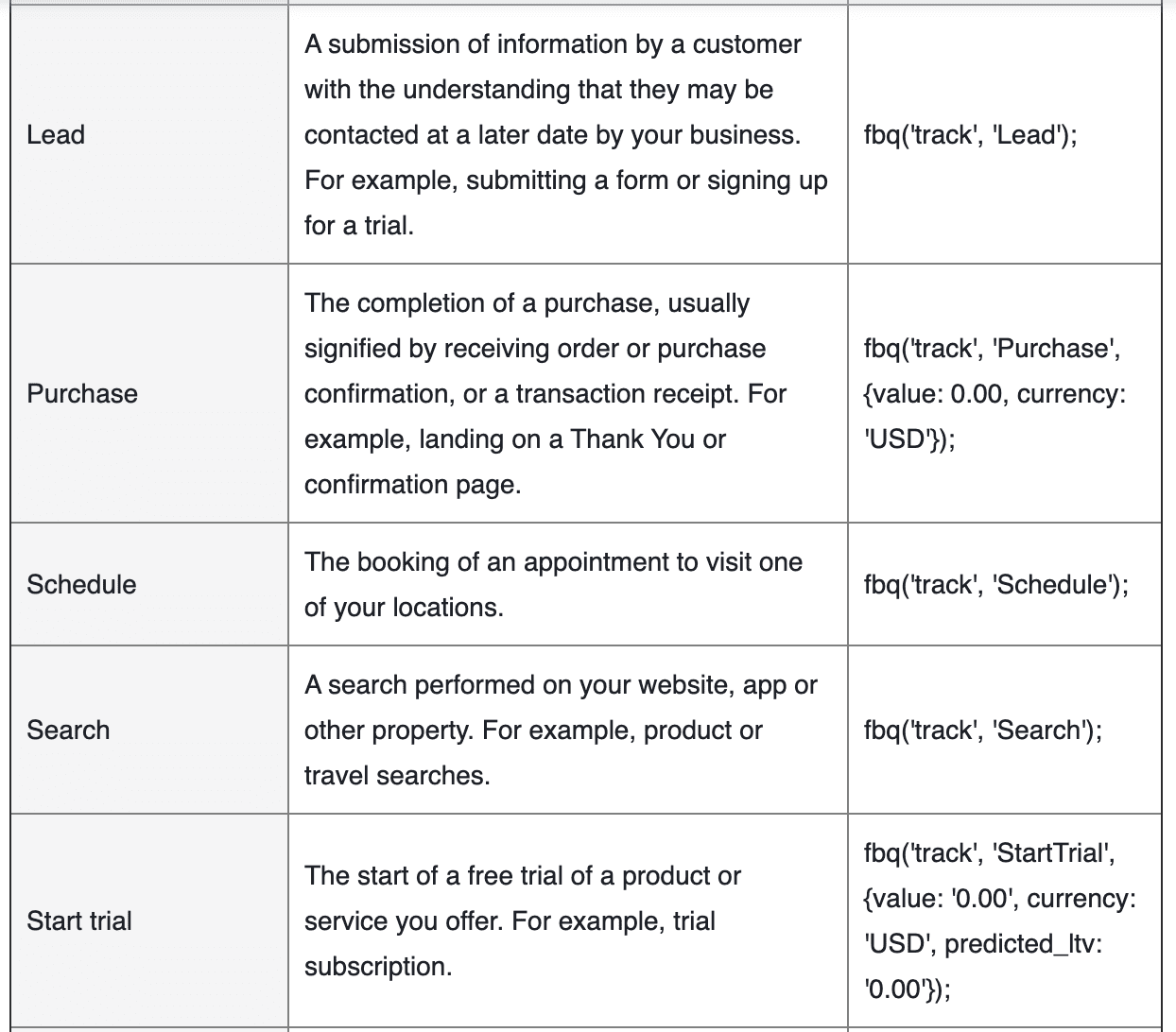
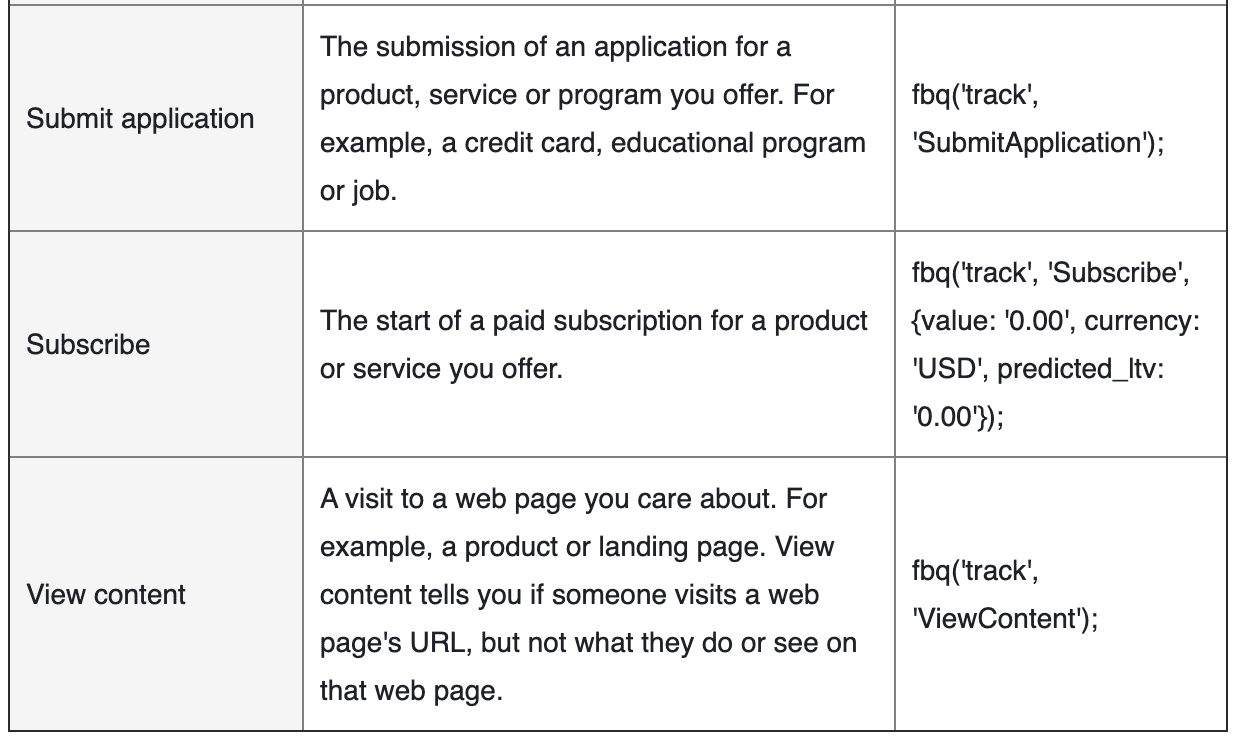
Want a more step-by-step walk-thru on installing Facebook Pixel to your website? Go here: Facebook's Pixel implementation guidelines.
And that's it.
You've completed the pre-stuff.
Next comes the fun part.
Let's explore 10 ways to boost your Facebook campaign results with advanced KlientBoost-approved strategies.
1. Facebook Ads + Google Ads = A Match Made in Heaven
If you don't appreciate what you've done up to this point, you've set a rock-solid foundation for your Facebook strategy.
The launch pad is done.
Let's see about bringing in the helos.
The good thing about digital marketing is that you don't have to choose a single channel. You don't have to place large bets on one thing and then sit back and pray things will roll the right way.
It's the opposite.
With digital marketing channels, the fun is how you combine multiple campaigns and lead sources to support each other throughout your conversion funnel.
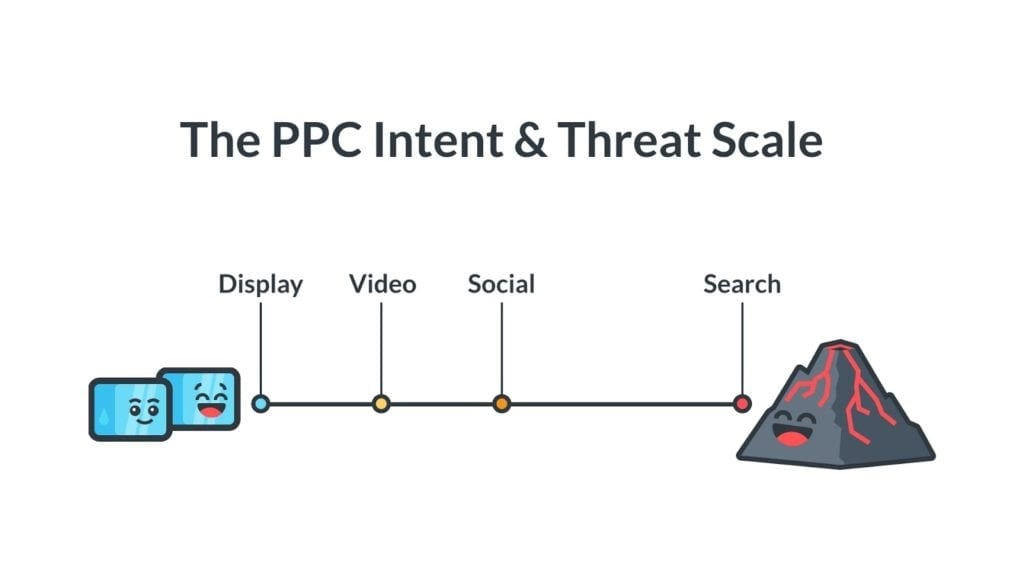
Here's one of the tactics we use at KlientBoost (going after competitor keywords):
1. Who's interested?
We use Facebook ads to create brand awareness and see who's interested in our client's product/offer.
2. Bid higher
We use this website remarketing audience to create RLSAs (Remarketing List Search Ads) in Google Ads (formerly Adwords).
When a past website visitor searches for one of your keywords, you'll place a higher bid to appear higher on their search results page.
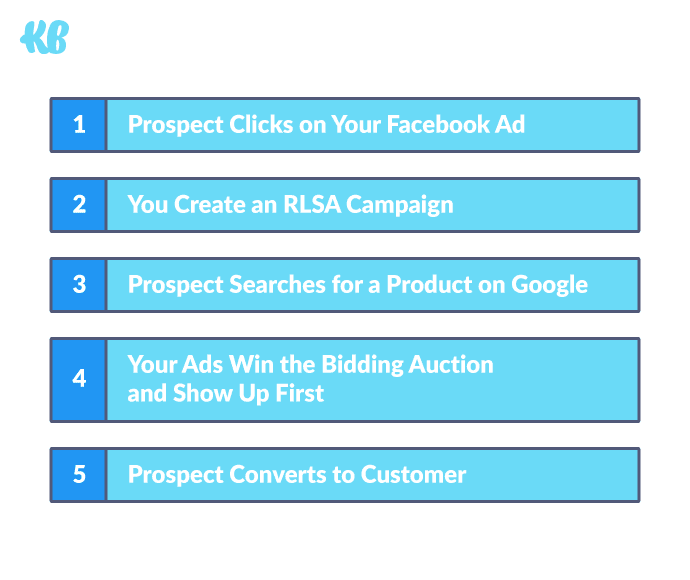
3. Go after competitor keywords
Then you take this Facebook + Google strategy higher.
That's why you're here, right?
Use this trick: RLSA competitor bidding lets you bid more aggressively for your competitors' keyword searches. Snatch potential customers right from under your competition's nose!
Further Reading: Facebook Retargeting: 157-Point Guide & 12 Ideas For Sweet Results
2. Facebook Ads + Content Marketing
Most companies create Facebook ads with the goal of turning warm leads into paying customers.
This is good.
Sadly, those ads also target cold leads.
That's bad—you can't Cling Wrap warm and cold together. Doing that drastically reduces your campaign's ROI.
Why target warm and cold together in the first place?
Because there aren't enough warm leads to target yet. So marketers target cold leads with straightforward sales offers.
The problem is the huge unfilled gap between cold leads and warm leads.
That's the problem you need to fix. And here's how you do it:
You can turn cold leads into warm leads with content marketing.
Yep. Content marketing.
Don't panic.
Content works with your Facebook ads.
Yes, “content” is the SEO side of things and, no, you don't have to be the world's best writer to make strong content. Content simply needs to be valuable and solve your target audience's pain points. Keep things clear, concise, and compelling.
Then share that compelling content with your Facebook target audiences. Do that instead of hitting them in the face with a salesy offer first thing.
For example, Moz plays the long game (content) and publishes 10x content about the latest SEO tactics. Slowly but surely, cold leads start to perceive Moz as a leading expert in the field of SEO.
Those new leads eventually warm into customers.
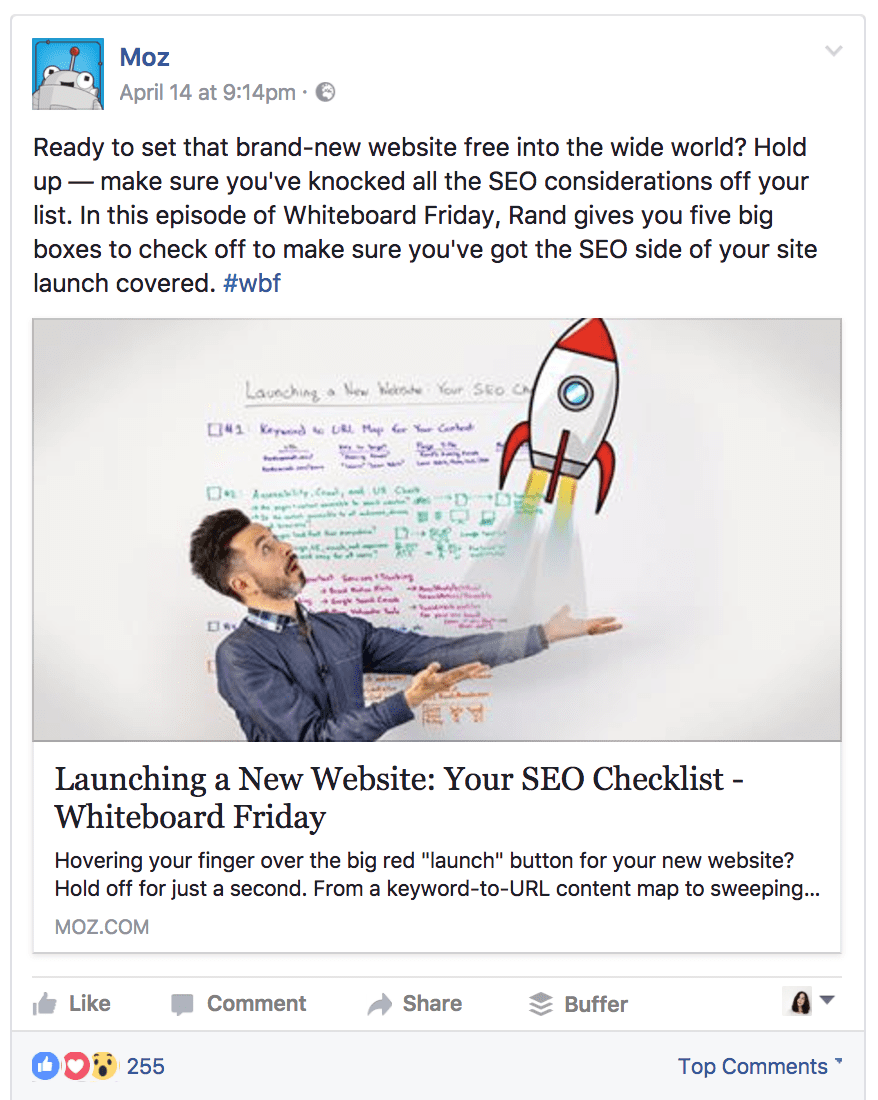
Later, after a person has read a couple of your blog articles or downloaded a free eBook, you can move them forward in the funnel, and target them with more sales-oriented Facebook ads.
How to promote your content
According to a Content Marketing Institute article on Facebook blog promotions, this is the best publishing plan for promoting blog content on Facebook:
- Share your post on Facebook. Easy.
- Ask your team members to like and share the post. Easy. Only, don't overdo it or Facebook will penalize you.
- Boost your Facebook post to reach a wider audience. Easy.
Notice something?
Three easies. Content is your friend.
Tip: You can use a single Facebook page post across multiple ad campaigns, so that all the social proof (likes and shares) show under a single ad.
Here are additional content marketing tips about paid content promotion.
3. Use Facebook Mobile Ads + Instagram Ads
Mobile ads make up 94% of Facebook's advertising revenues. That's somewhere in the ballpark of $16.34 billion in quarterly mobile ad revenues.
That's a ballpark you want to play ball in.
If you add in Facebook's Audience Network, you can reach an even larger audience.
Think about your landing page. Is it mobile-optimized?
It absolutely must be.
Don't make the Facebook ad mistake of driving mobile traffic to a web page that's hard to read without a large screen.
We've seen mobile Facebook ads deliver great results across different industries, from consumer products to B2B—it's up to you to test whether it works for your brand.
Here's an example by Udemy using both Facebook and Instagram mobile newsfeed ads to get people to sign up for courses.
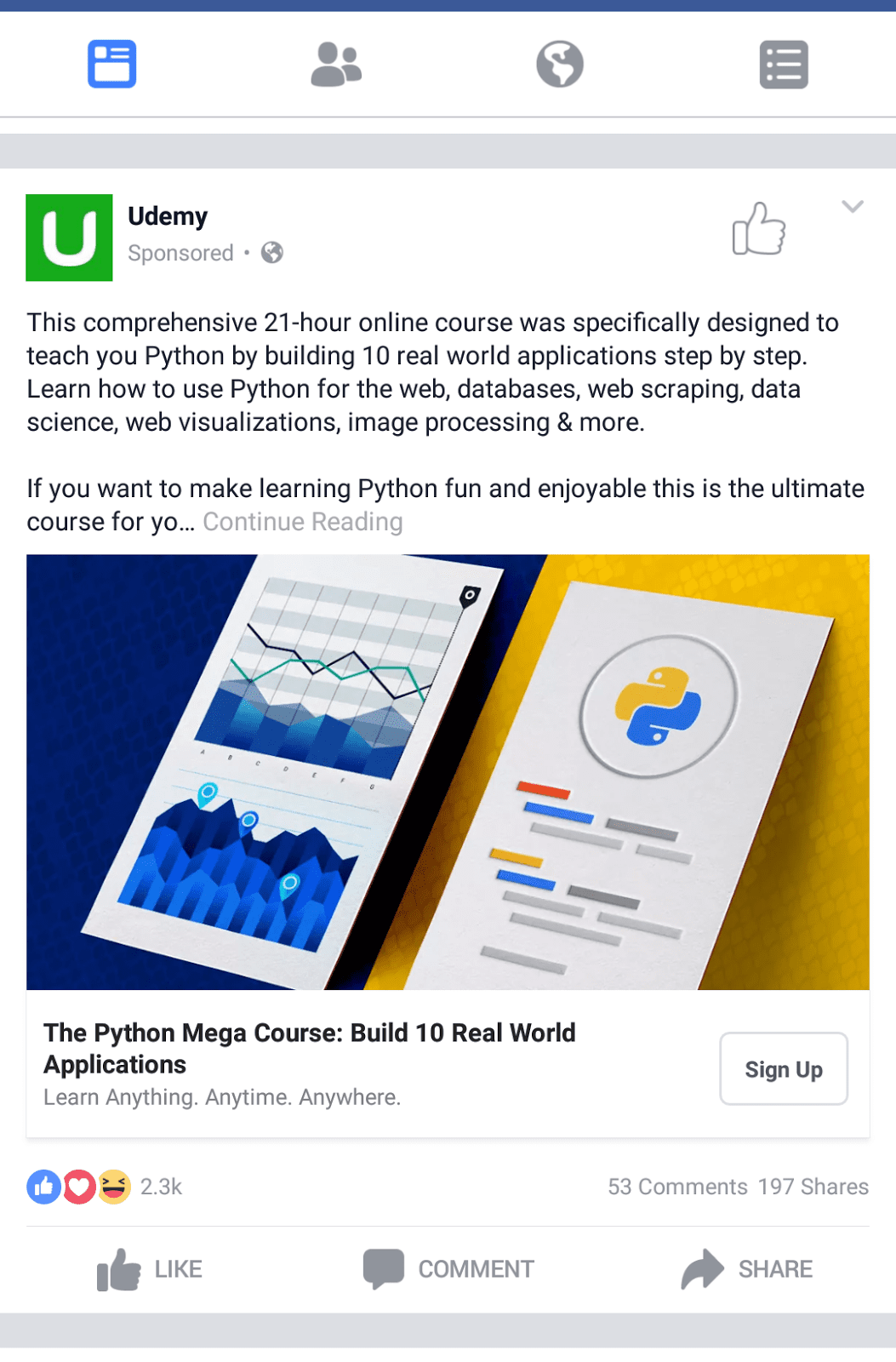
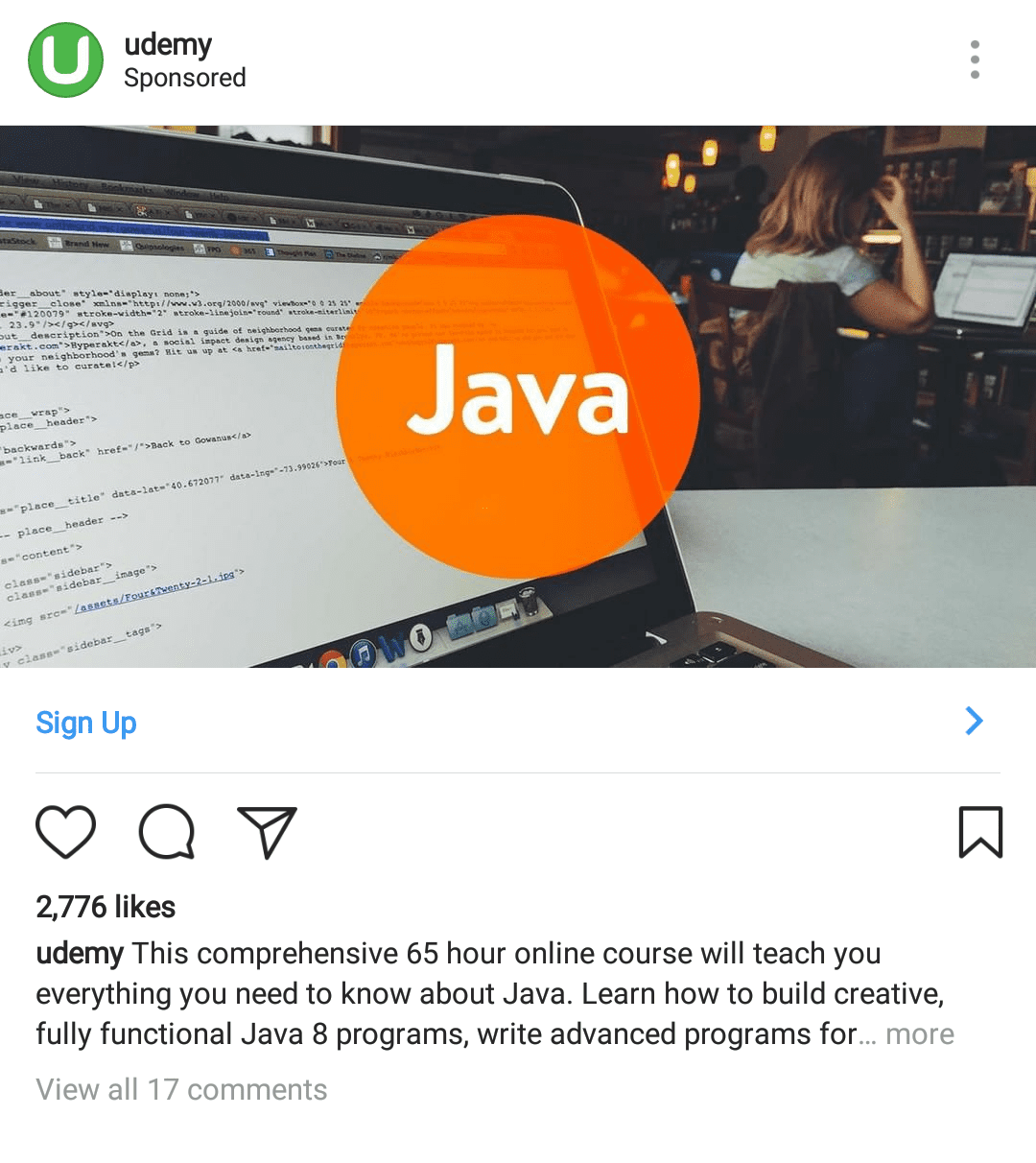
Create different ads for desktop and mobile newsfeeds.
Desktop newsfeed ads benefit from longer link descriptions. Their headline is the most eye-capturing part of the ad.
Mobile ads, on the contrary, display the headline with a smaller font, making the main ad text the most important part of your ad copy.
4. Run A Free Giveaway Campaign
If you want Facebook ad clicks, offer something of high value.
Facebook giveaways and contests are highly engaging.
Here's an example: SurveyMonkey's chance to win cool prizes in exchange for participating in surveys.
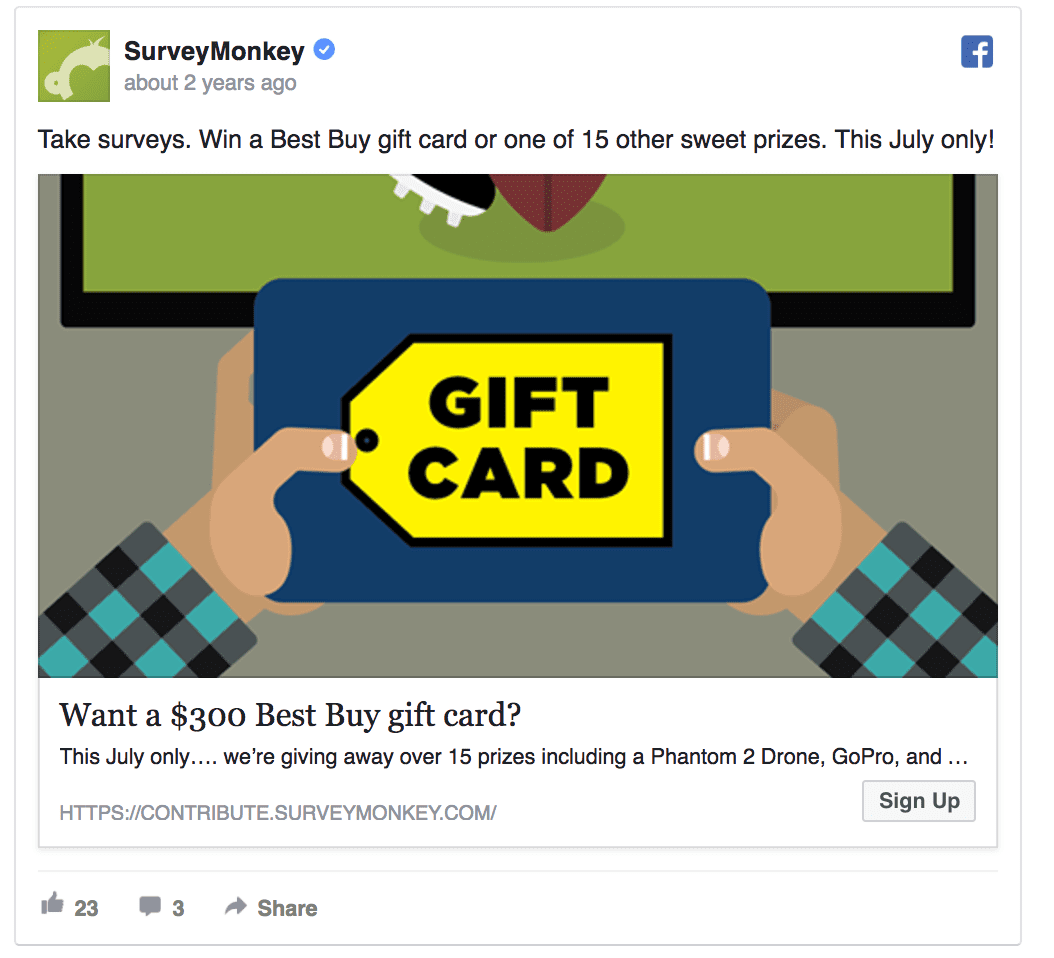
Del Mar Fans & Lighting's Facebook giveaway asks entrants to vote on their preferred lighting product. Once they vote, they enter the competition (and become a lead).
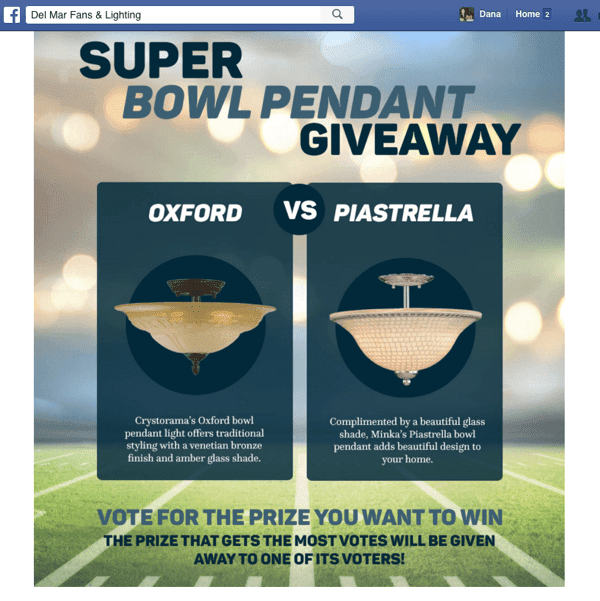
So there's a light spin on ads.
Your Facebook contests don't have to focus 100% of the time on sales. Instead, look for long-term benefits such as increased brand awareness and new leads to enter in your conversion funnel.
When targeting a large cold Facebook audience, select Reach as your campaign objective, so that Facebook will deliver your ads to the maximum number of people.
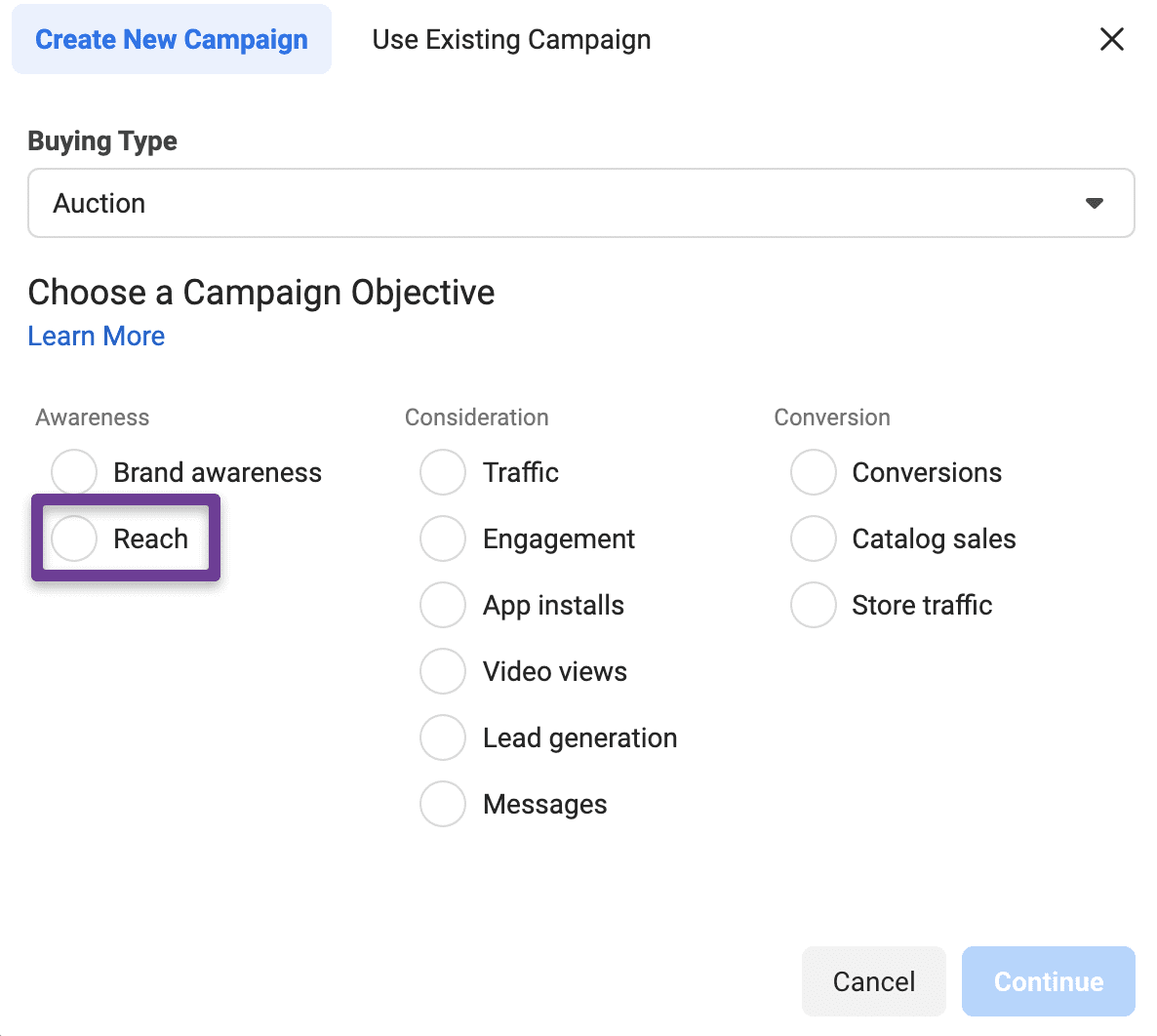
5. Build New Marketing Lists with Lead Ads
Lead ads make life super easy.
When a lead ad appears on your newsfeed, you can fill in your contact information without ever leaving Facebook
This removes the possible friction points between your prospect and the conversion, making it easier for them to exchange their email address for an eBook or another type of Facebook ad offer.
First: create a custom audience
Create a Facebook Custom Audience of blog readers and website visitors in the past 30 days who haven't converted on any offer yet.
Then: set up a lead generation ads campaign
Set up a lead ads campaign to collect their emails and move them into your marketing funnel
That's exactly what AdEspresso did with their eBook campaign on Facebook. Here's what their ad looked like:
Their results?
The average cost for a prospect's email address was around $2
AdEspresso also ran an experiment to see which ads worked best: Facebook lead ads or regular ads with a landing page.
They concluded that:
“When re-targeting website visitors, Lead Ads are more likely to win on mobile, while Landing Pages are more likely to win on Desktop.”
The better your content offer, the more downloads people make, the better the new leads results.
6. Maximize Results with Multi-Format Facebook Ads
To get the most out of your Facebook advertising strategy, use multiple ad formats to engage audiences, showcase products, and drive conversions. Each format offers unique strengths that, when combined, can significantly boost your results.
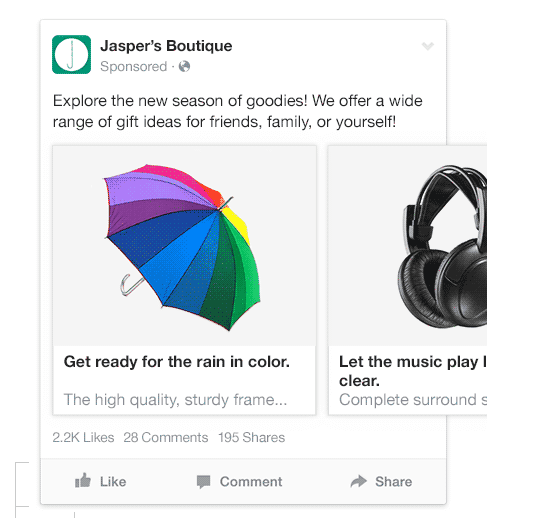
Multi-Product Ads: These ads let you promote multiple products within a single ad, providing customers with choices while maximizing your ad spend. For instance, Adobe’s multi-advertiser case study revealed that multi-product ads can improve click-through rates (CTR) by up to 300%, reduce cost-per-click (CPC) by 35%, and increase cost-per-acquisition (CPA) efficiency by over 250%. Whether you’re highlighting a product line or showing various benefits of a single product, multi-product ads are versatile enough for e-commerce, B2B, and subscription services.
Carousel Ads: With up to 10 slides, carousel ads allow you to tell a cohesive story or spotlight multiple features or steps of a product. For example, a subscription box service could use a carousel ad to illustrate the entire process, from signing up to unboxing. The key to success is ensuring the first slide grabs attention, as it determines whether users will engage further.
Video Ads: Videos are one of the most effective formats for capturing attention and driving
action. Shoppers who watch videos are 1.81 times more likely to purchase, and video ads boast the lowest effective cost per click (eCPC) at $0.18, according to Kinetic Social. For example, Adidas used a video ad to highlight a product in action, amassing over 11k likes. Use high-quality, relevant videos to showcase products, demonstrate software, or even capture the excitement of unboxing a subscription box.
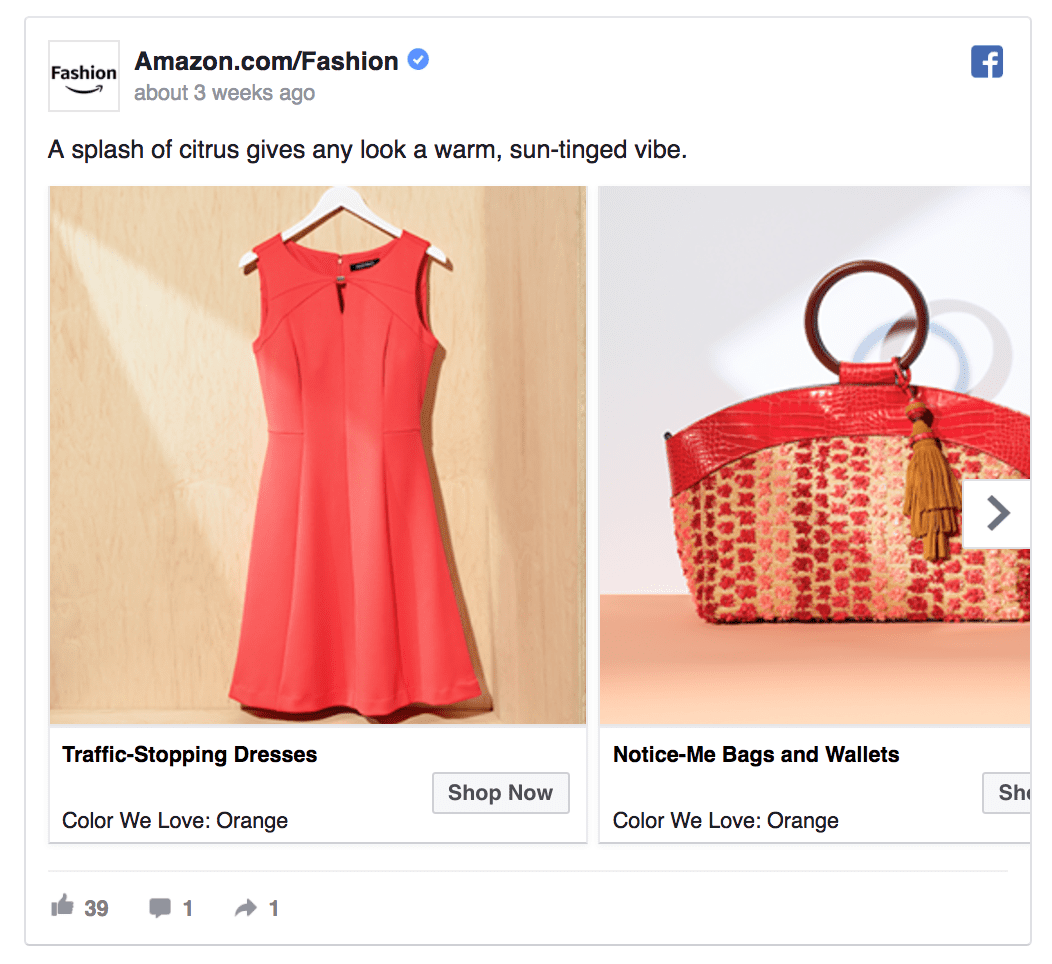
Dynamic Ads for Remarketing: Retarget hesitant customers with dynamic ads that personalize content based on their browsing behavior. For example, KLM Royal Dutch Airlines increased their conversion rate by 87% with dynamic ads compared to other campaigns. E-commerce brands can showcase a carousel of products visitors viewed, such as Amazon retargeting users with red dresses and matching accessories. By pairing this format with Facebook Custom Audiences and the Facebook Pixel, you can deliver highly tailored ads that boost engagement and conversions.
By leveraging these ad formats—multi-product, carousel, video, and dynamic ads—you can create engaging campaigns that tell compelling stories, offer personalized experiences, and drive meaningful actions, all while optimizing your ad budget.
7. Run a Profitable Upsell Campaign
Repeat customers contribute 41% of U.S. revenue and spend nearly five times more per visit than new shoppers, making upsell campaigns highly lucrative. One strategy is targeting recent purchasers with related product offers. For example, MOO offers notebooks to customers who’ve recently purchased business cards, maximizing the lifetime value of each customer.
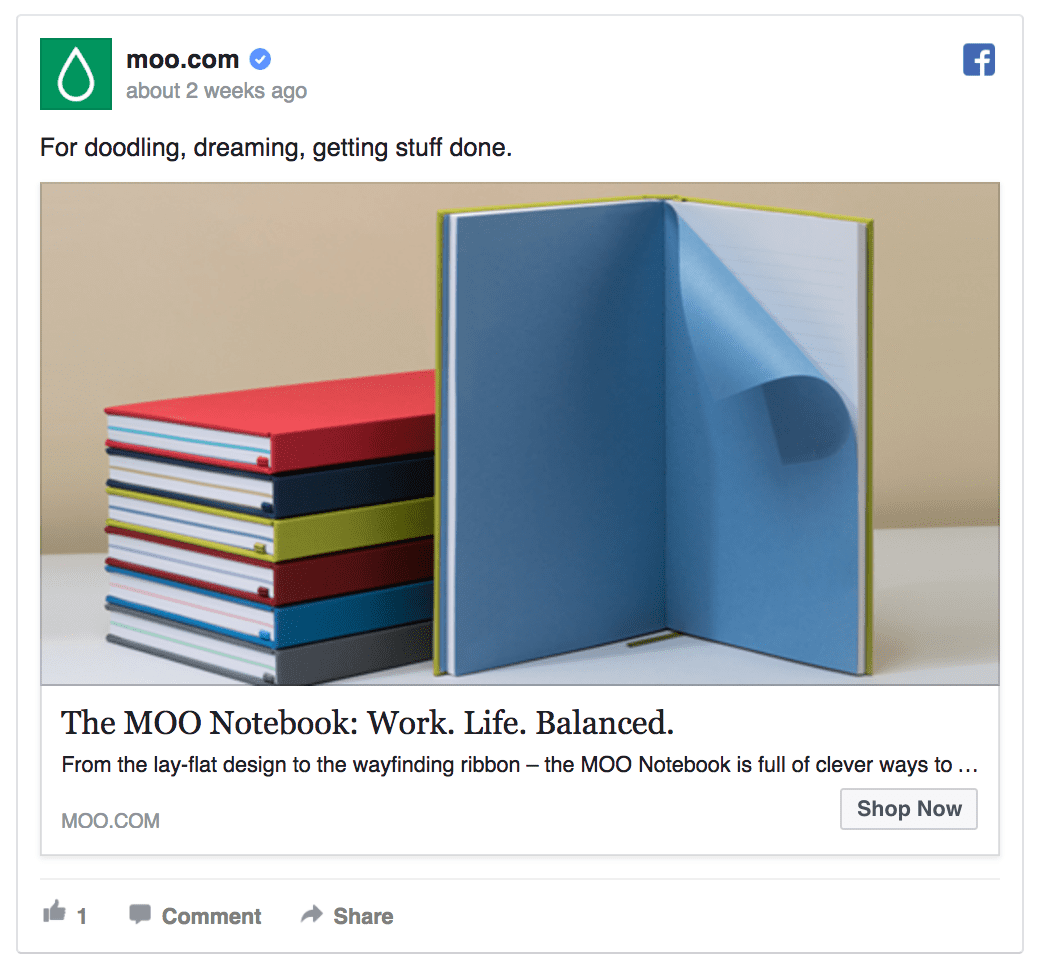
Another approach is reconnecting with past buyers through discounts. For instance, Teabox uses discount offers to re-engage previous customers, driving repeat sales effectively. For B2B businesses, referrals are especially impactful—84% of B2B decision-makers start their buying process with a referral.
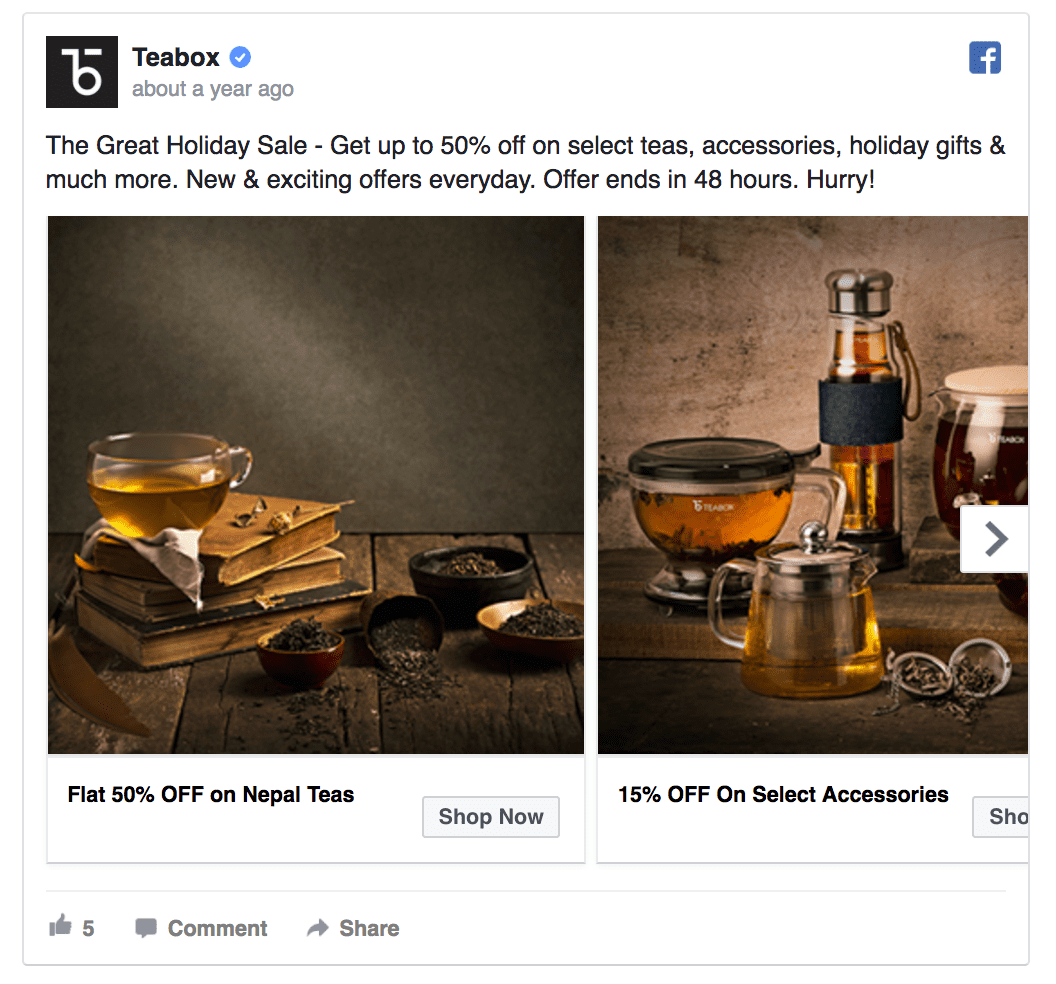
Upsell campaigns tap into existing customer relationships to boost ROI while strengthening brand loyalty.
8. Nurture Leads and Keep Customers Happy
Converting leads into customers doesn’t always happen on the first try. Some leads may take months before they’re ready to buy, so consistent nurturing is essential. Run periodic campaigns with targeted content, such as guides or articles tailored to different segments. For example, Keap targets small business owners with highly specific Facebook ads. Use Facebook Custom Audiences to remarket to email lists, past visitors, or other key audiences.
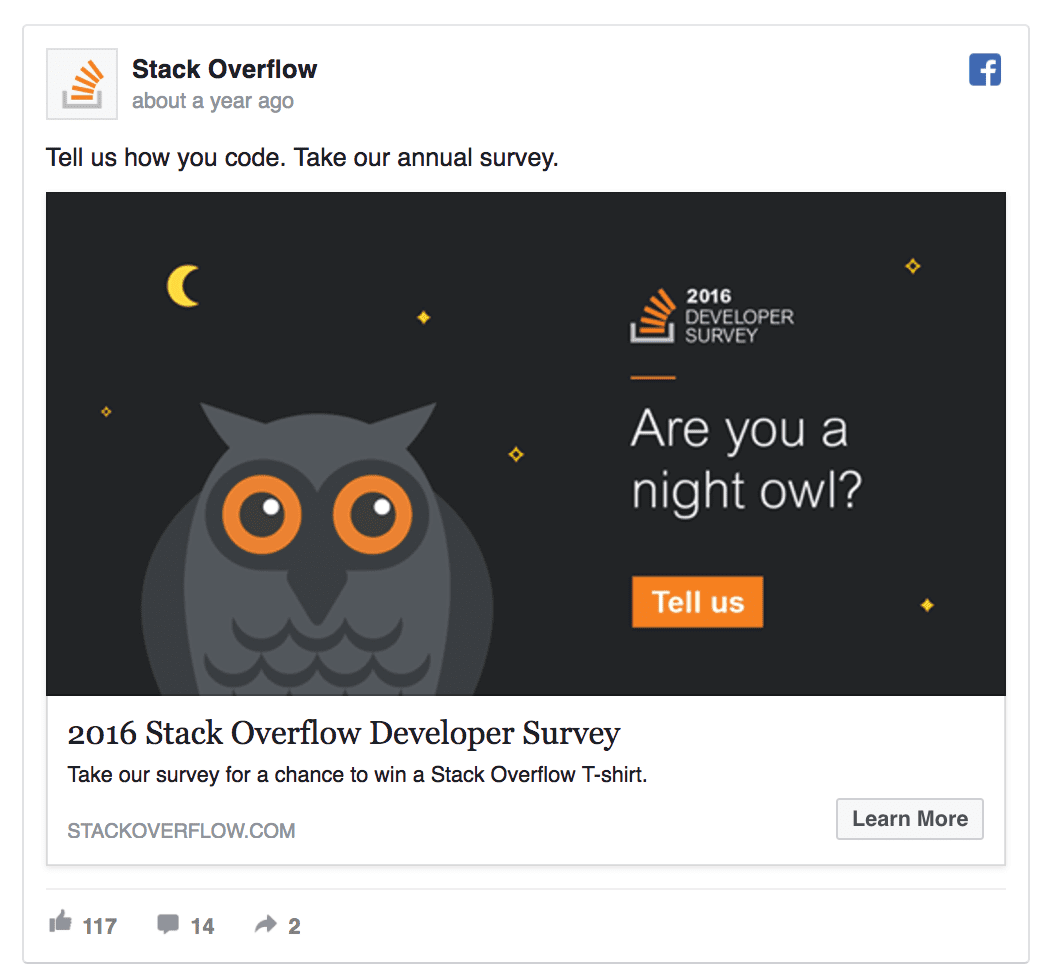
Happy customers are equally important. They drive referrals, re-purchases, and upsells, which cost less than acquiring new customers. Engage them with valuable offers, beta tests for new products, or simple surveys to show their feedback matters. For instance, Stack Overflow’s annual surveys strengthen their connection to their audience while gathering key insights.
9. Find New Prospects with Lookalike Audiences
Usually, companies start Facebook advertising by targeting their campaigns at a big pool of cold leads (a large cold audience).
Mostly, this is a loss for everyone. Deflating balloons.
Facebookers see lots of irrelevant ads—and this irrelevancy will be worse with the Facebook pixel flying one engine short. Irrelevant ads demolish advertising budgets and contribute to a negative campaign ROI.
Luckily, you can avoid going down that path.
Instead, you can target Facebook Lookalike Audiences that also consist of cold leads. Those leads' profiles will look like your current customers, making them more likely to be interested in your offers.
The best Lookalike Audience strategy on Facebook is targeting people who resemble past converters and customers.
Here's how it works:
- Create a Facebook Custom Audience of past converters.
- Set up a Lookalike Audience based on the Custom Audience you just created.
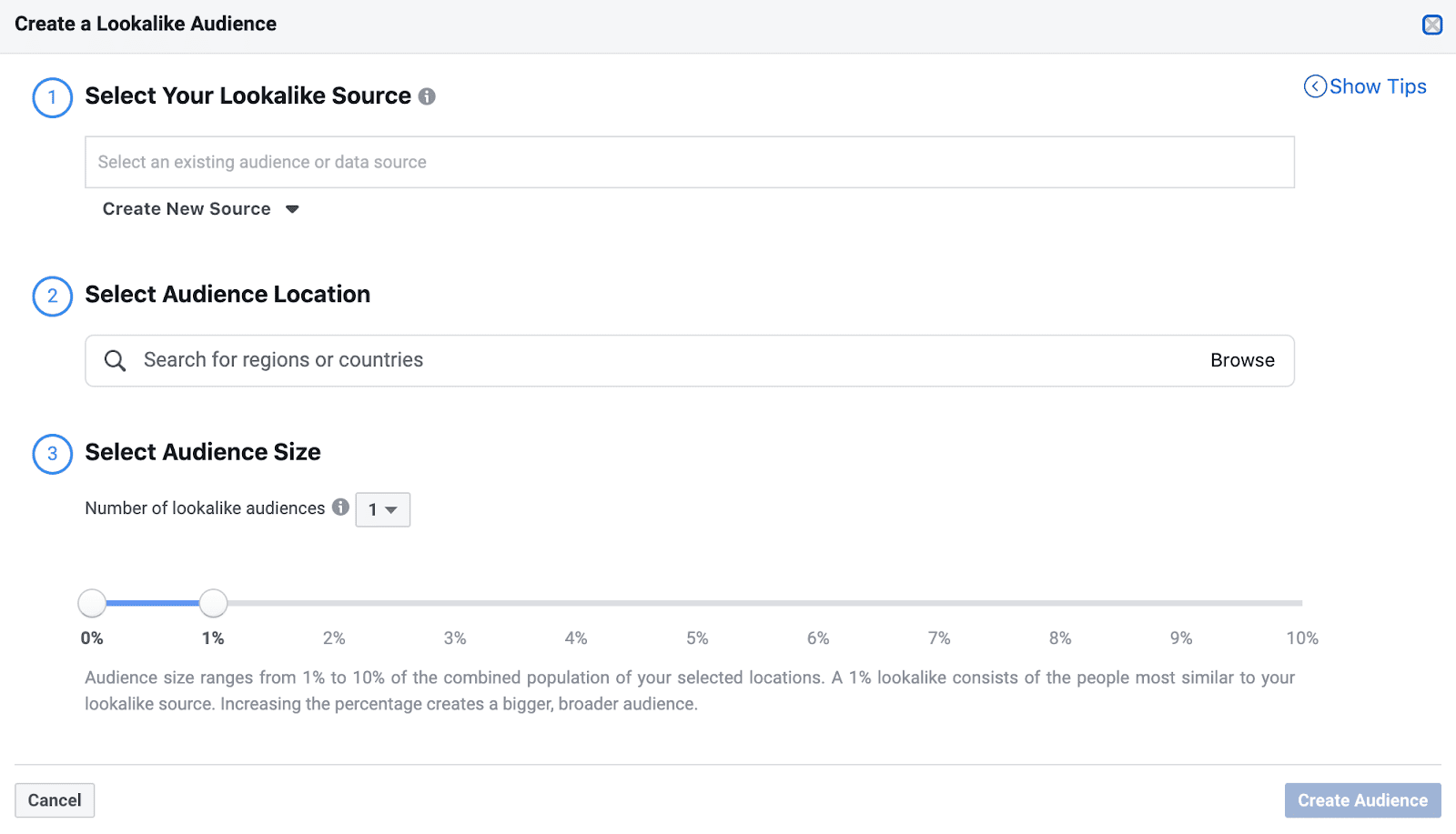
10. Use the Mille Feuille Targeting Method
If you've never tried Mille Feuille, polish your advertising forks, ladies and gentlemen.
Mille Feuille is a dessert with a fancy name and a heavenly taste. In English, Mille Feuille means “a thousand layers.”
When applied to Facebook ads, the Mille Feuille method layers your audience targeting so that you'll reach the core audience group most interested in your offer.
Applying The Mille Feuille Method
Let's say you want to target your blog readers—but not all of them.
Just an intersection of them.
You only want to target the blog readers you think would be interested in your latest article about the best coffee shops in Costa Mesa, California.
At the same time, you want to exclude the people who read a similar post a couple of weeks ago.
Here's how you do that:
- Create a Custom Audience of blog readers.
- Exclude the people who read your past article.
- Create a Saved Audience that includes the Custom Audience of your blog readers.
- Narrow down the Saved Audience by targeting only the people living near Costa Mesa, California.
- Add a layer of interests around coffee to be even more specific.
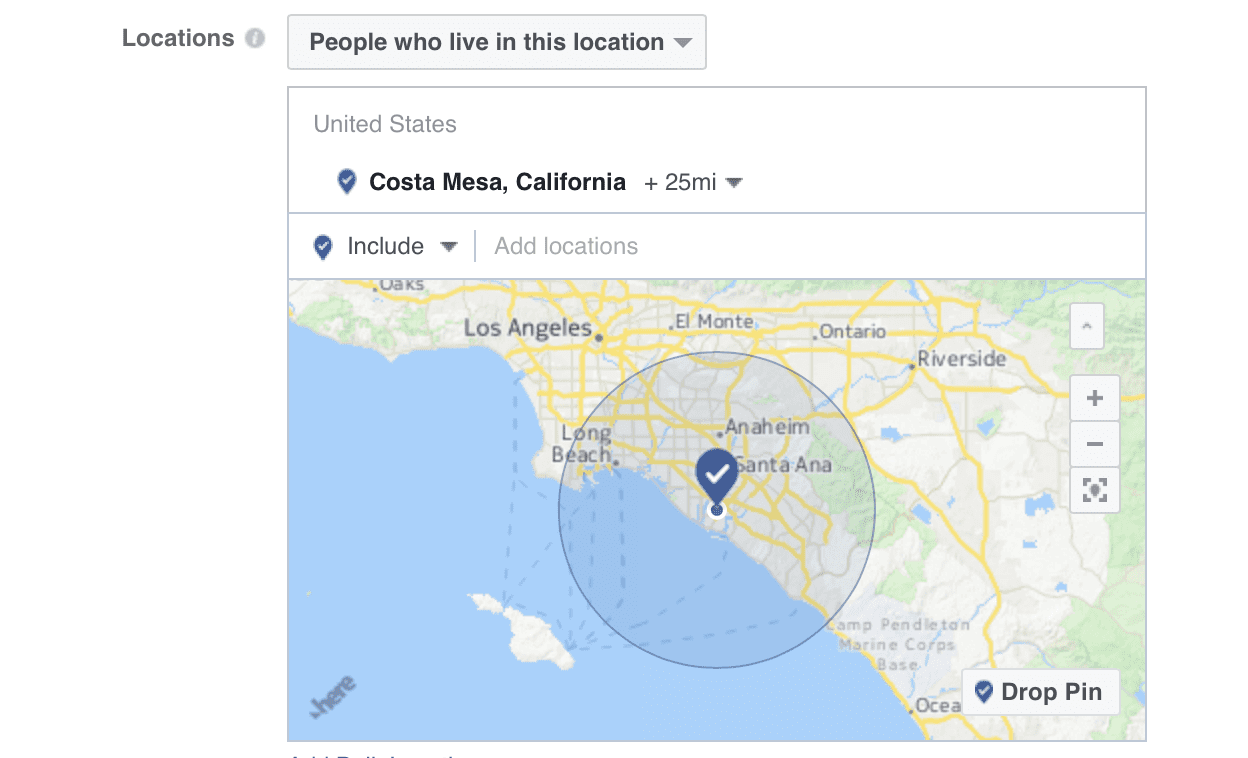
Apply the Mille Feuille targeting strategy to reach granular target audiences with highly-relevant offers. That's especially important when working with limited budgets.
People put a lot of weight behind testimonials. That's why social proof ads that have reviews from actual clients do well. Starred ratings next to positive remarks minimizes fear of something new.
Section 3: Finishing touches
Building a killer strategy is the first step.
Making your ads look good so they grab attention is the next.
In this section, we'll explore the fundamentals of great Facebook ads and how to publish, manage, and test them.
Here's how to set up testing in the Ads Manager:
- Go to Ads Manager
- Click the Campaigns tab
- Select A/B Test
- Choose the variable you want to test (Audience, creative, placements, etc.).
- Perform your test.
- Select how long to run your test.
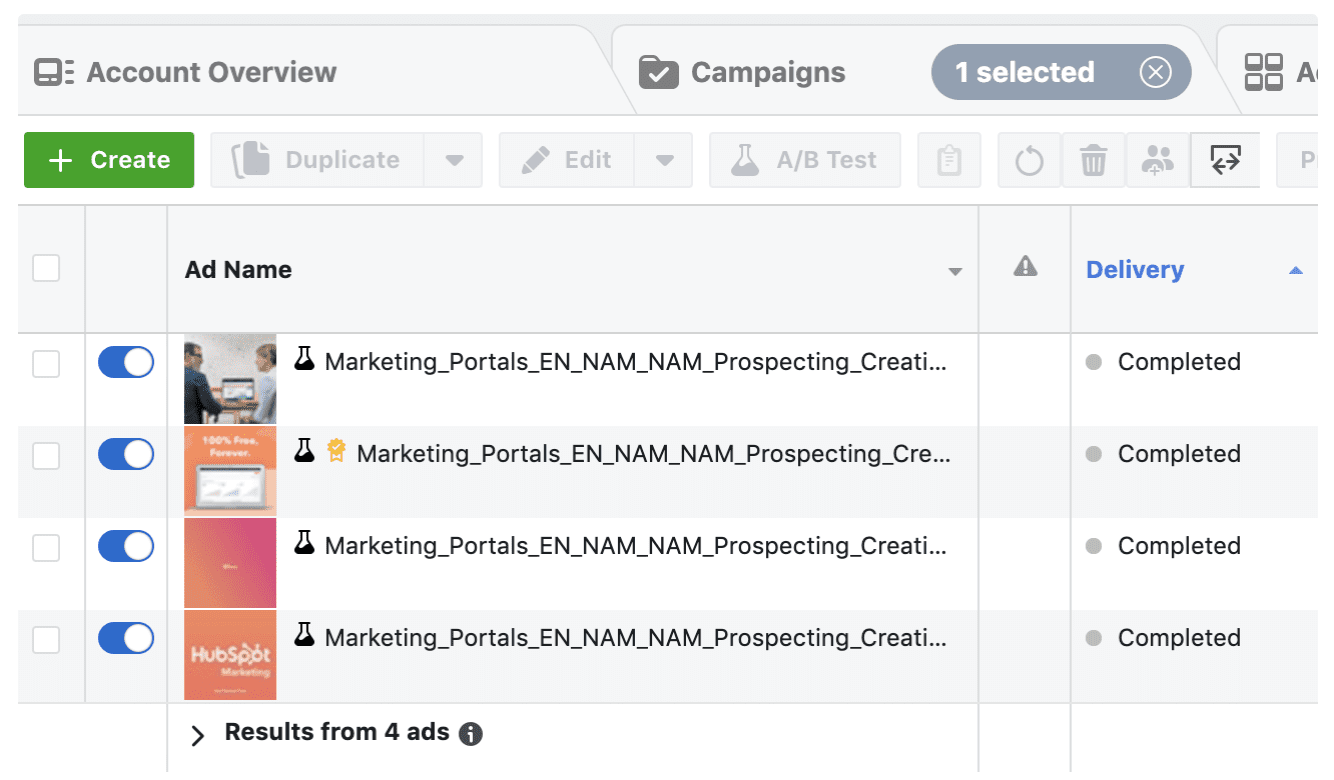
Some things you'll want to know before you test:
Facebook supports different ad types across Facebook, Instagram, Messenger, etc.
- Image
- Video
- Carousel
- Collection
When designing your creatives, test each of these formats to see which one your audience responds to most.
Do more of that ad type.
For creatives, you work on two things:
- What it looks like (format)
- Where it goes (display placement)
Play with each of these to see what your existing customers like, and reach out to new customers. Get creative with your creatives. Need help? Facebook Ads Guide
This one isn't complicated.
Write two versions of your ad copy.
Test which one gets more clicks.
Blammo.
CTA
CTA is short for Call to Action. That's your button. Don't overthink it. Come up with two different buttons and see which action called to your customer most.
Your options are limited in Facebook. This is mostly a good thing. It cuts down on creativity, but it gets you where you need to be fast.
Do you sell bar stools? Go with SHOP NOW, or GET OFFER.
Run a non-profit?. Go with DONATE NOW, CONTACT US, or LEARN MORE.
CTA options
- Book Now
- Contact Us
- Donate Now
- Download
- Get Offer
- Get Quote
- Get Showtimes
- Learn More
- Listen Now
- Play Game
- Request Time
- See Menu
- Shop Now
- Sign Up
- Subscribe
- Watch More
- Send WhatsApp Message
- Apply Now
Improve Your Bidding Strategy
Smart tactics and catchy creatives are the basics. But picking the right bidding strategy, audience, and offer prevents overspend and negative ROI.
How your bid decides who sees your ad, how often they see it, and how much that will cost you—too much if you muck up your bid strategy.
A Facebook ads campaign must do well at the auction.
The auction barn has millions of other advertisers bidding on placements that billions of Facebook viewers will see. Fine tuning your bid strategy is just as important as nailing your ad strategy so the right people see it, love it, and click your buttons like plucky chickens peck feed on a warm summer morning.
Highest Value or Lowest Cost
If you don't choose a bid strategy, this is the default. Facebook will try to get you the most results for the lowest possible CPC (cost per click). It's a good place to start if you don't know what to bid.
Cost Cap
This is when you put a cap on the cost of your bids. You have more control than the lowest cost bidding strategy and you can get better placements if you've done your math and you know what you can spend per result. You might spend more. You might win more though too.
Minimum ROAS
Share your purchase information with Facebook (in the Events Manager with the Facebook Pixel) and tell Facebook the minimum return on ad spend that will make you happy. Facebook optimizes ad delivery to Facebook users who are most likely to purchase at higher values.
Target Cost
Define the cap you want to spend to get your results and costs will stay low, guaranteed. That means you have to know how much those results should cost you. So some experience here helps. Use it to smoke test or with low budget campaigns.
Mobile Ads vs. Desktops Ads
Facebook ads weren't a thing until 2014.
Back then, ads (and websites) were built for desktop first and mobile devices second. The big thing used to be to make sure your website themes and ads were “mobile responsive.” Fast forward seven years and we are well into the age of mobile-first design.
Facebook has multiple ad sizes based on ad placement and device.
Ads look a little different between desktop and mobile. On desktop, the headline gets more focus so you put sweat into the headline. On mobile, the main text steals more of the show, so you polish the body text.
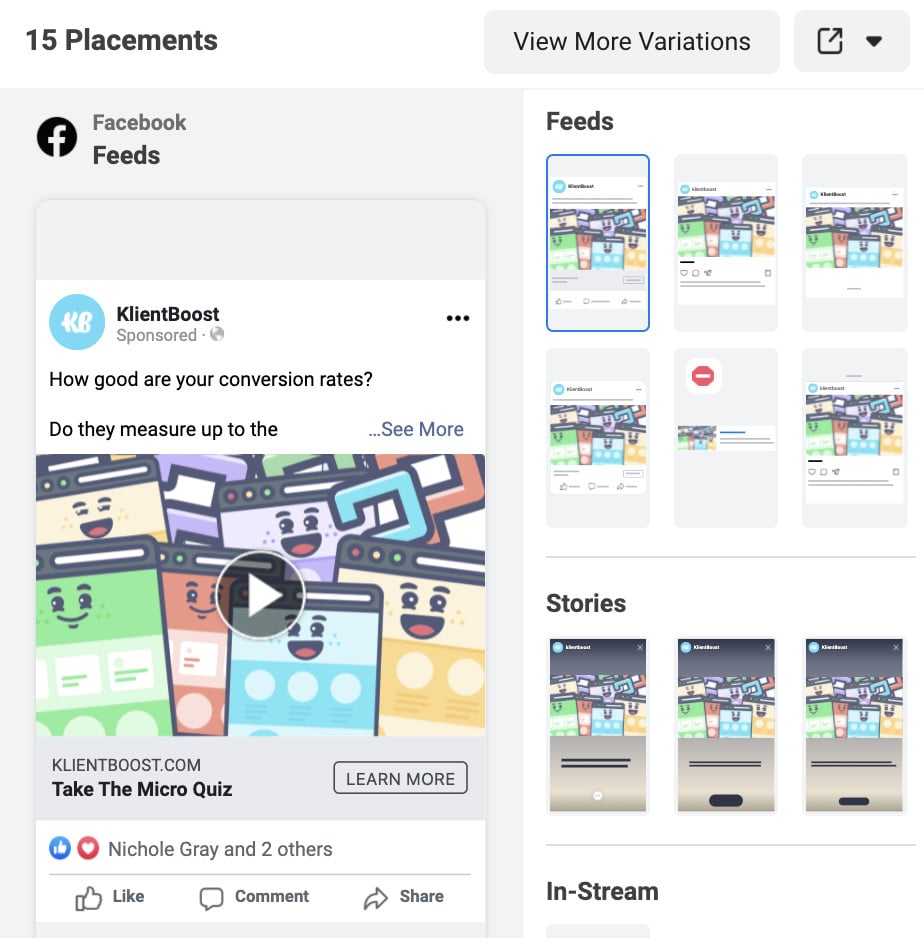
Here's what else you should know about desktop and mobile ads:
Desktop Ads:
Desktop ads are rectangular or square. They appear in multiple places and were the first of the Facebook ad types
The feed
Desktop image-based feed ads are 1200px wide by 628px high and are considered prime real estate. This is the ad type you will see on Facebook Marketplace, a buy and sell platform. Video-based feed ads are 600px wide x 315 pixels high (landscape) or 600px x 600px (square) and are considered essential to grab attention today.
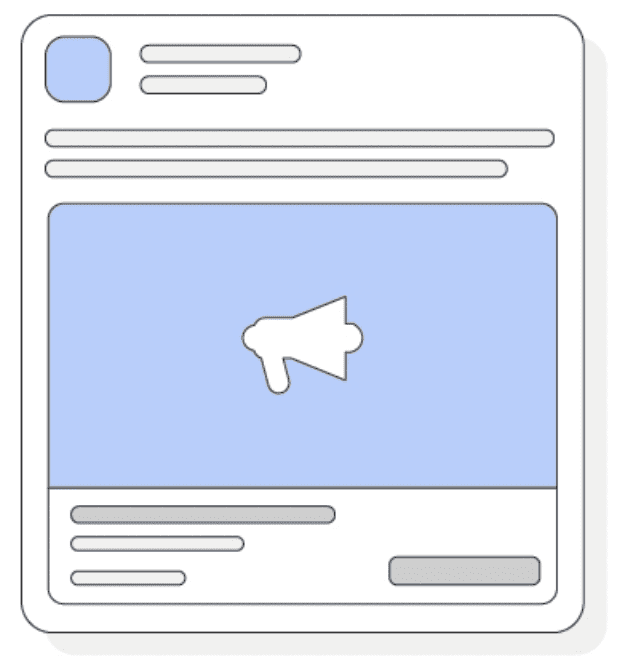
Right Column ads
Right column ads are smaller than feed ads and can only be image based. They don't cost as much and they succeed when there is a clear Call to Action with a brilliant graphic.
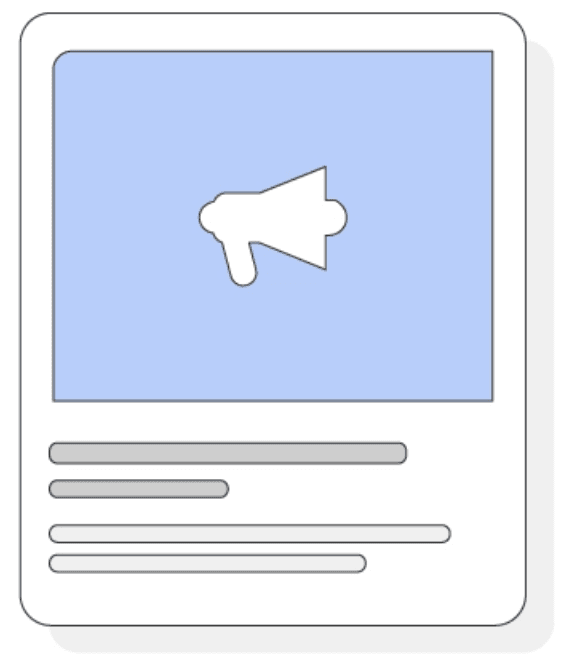
Carousel ads
Carousels tell a story and cost less than other ads (30-50% lower cost per conversion compared to single image ads).
They are also really cool.
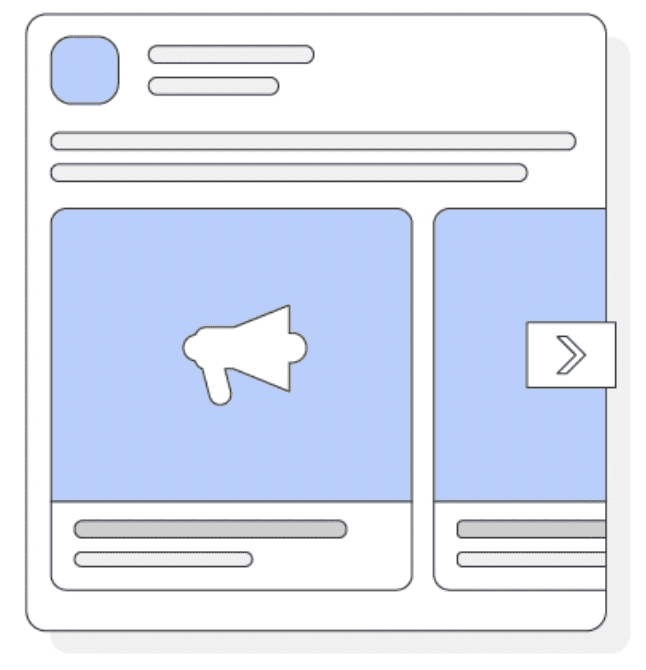
Carousel ads are a type of desktop ad that shows 2 to 10 images or videos in a slider (each with its own link). Users can swipe through the product slides.
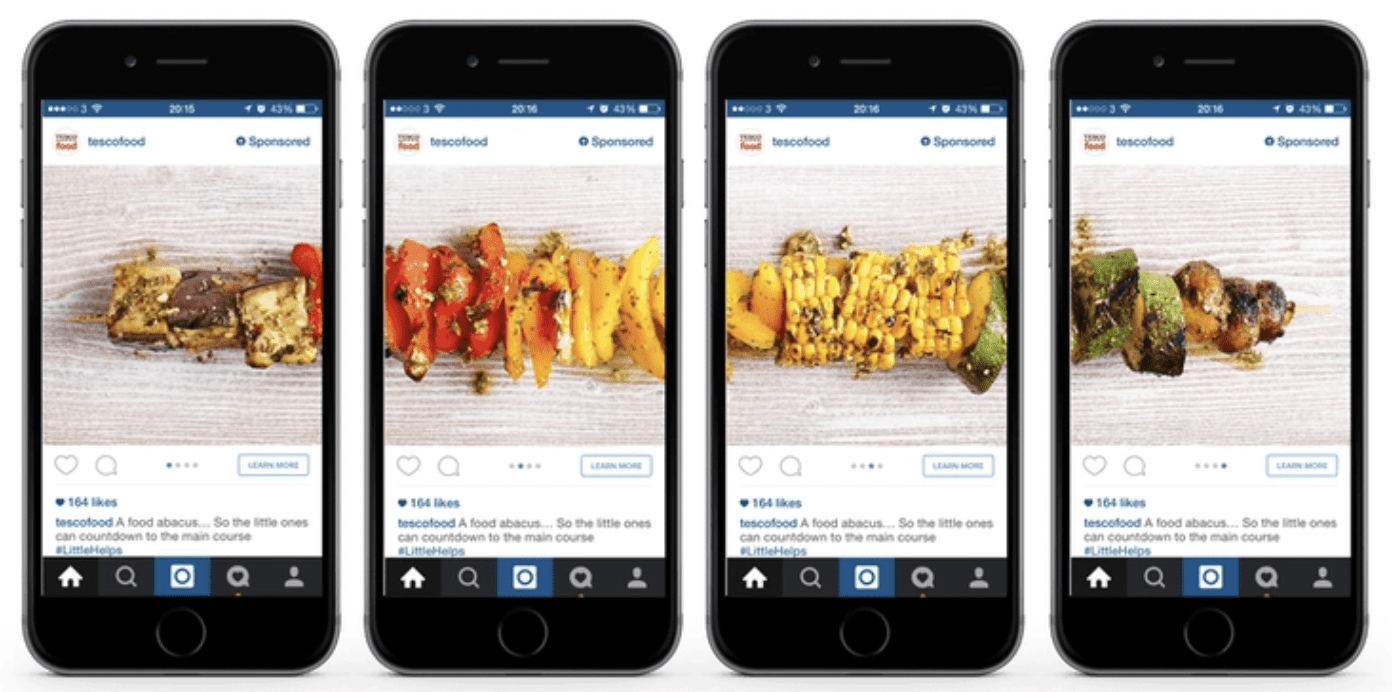
Carousel ads show up to 10 product shots in one ad—Source
Carousel ads are used in the desktop feed, right column, Facebook marketplace, and Instant Experience (fast interactive articles on Facebook mobile app and Messenger.)
Which brings us to mobile ads.
Mobile ads:
When we still designed ads for desktop, viewing those ads on our phone the way they were supposed to look meant turning the phone sideways (landscape mode). But Facebook knows that the majority of its ads views are mobile-driven.
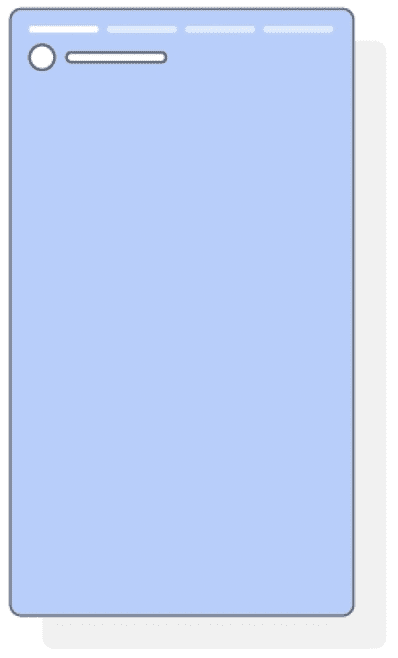
Vertical mobile ads take up the full screen and are 1080px by 1920px—source
Mobile ads can be photos or videos. For mobile, Facebook recommends a square format (which also works for Instagram) and vertical formats that fill a phone screen.
There are four main types:
- Instant Experience
- Collection Ads
- Story Ads
- Poll Ads
Instant Experience
Instant Experience is a fullscreen experience that opens (instantly) after someone taps your ad on their phone.
Collection Ads
A collection of products opens as an Instant Experience when someone interacts with it. Users see a product catalog lookbook (or store front) of products available for purchase from their phone.
This type of ad moves customers to the purchase stage quickly.
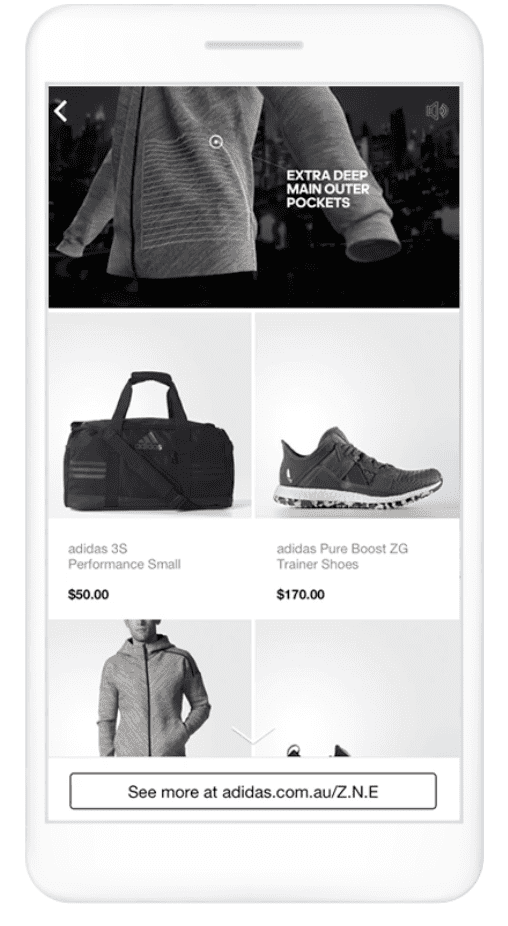
Story Ads
Story ads are a mobile-only full-screen vertical image and video format that maximizes screen real estate (when held the way a phone is supposed to be held—vertical portrait mode).
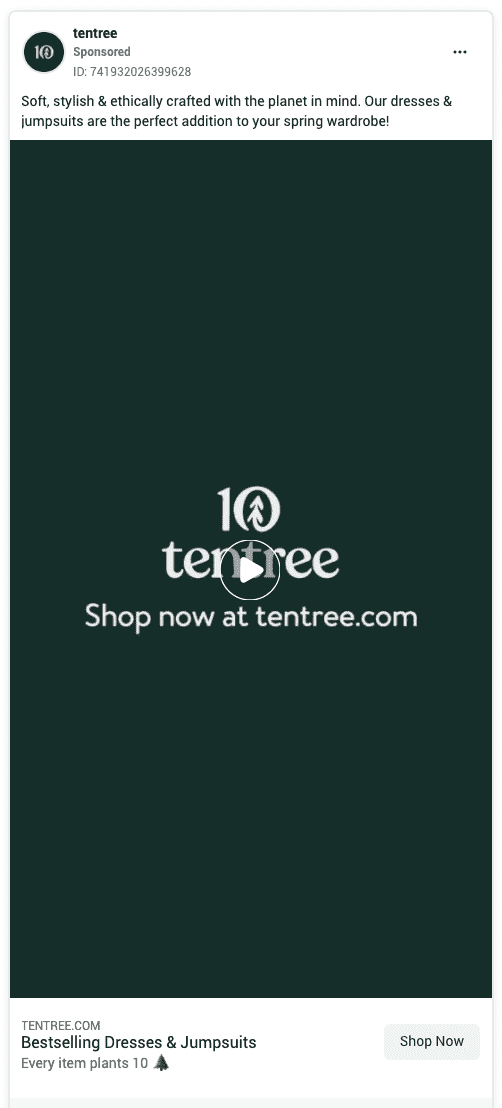
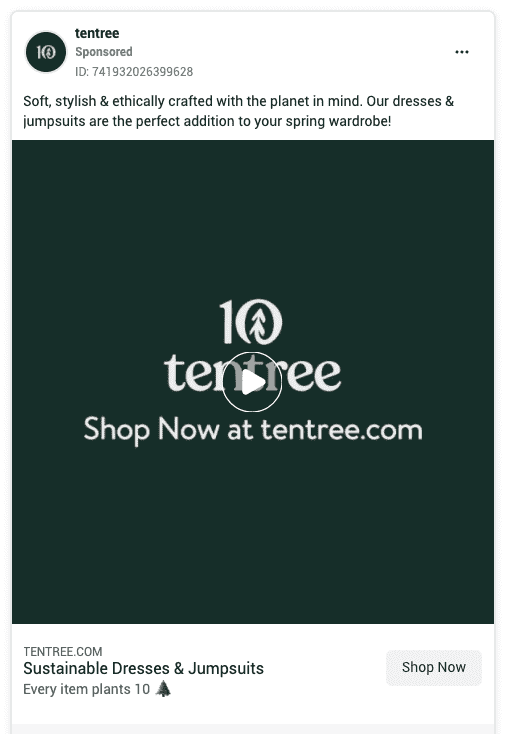
Square ads fit mobile screens. But Stories ads use more of the vertical space.
Story ads work the same way as Facebook Stories. They use a mixture of still images (that appear for 5 seconds) and short videos (that last for 15 seconds). Story ads appear between Facebook Stories.
Poll Ads
This ad type is mobile-only. It makes voting fun in an interactive way by providing links for two poll choices on an image or video ad. Users and advertisers see the tally of poll votes.
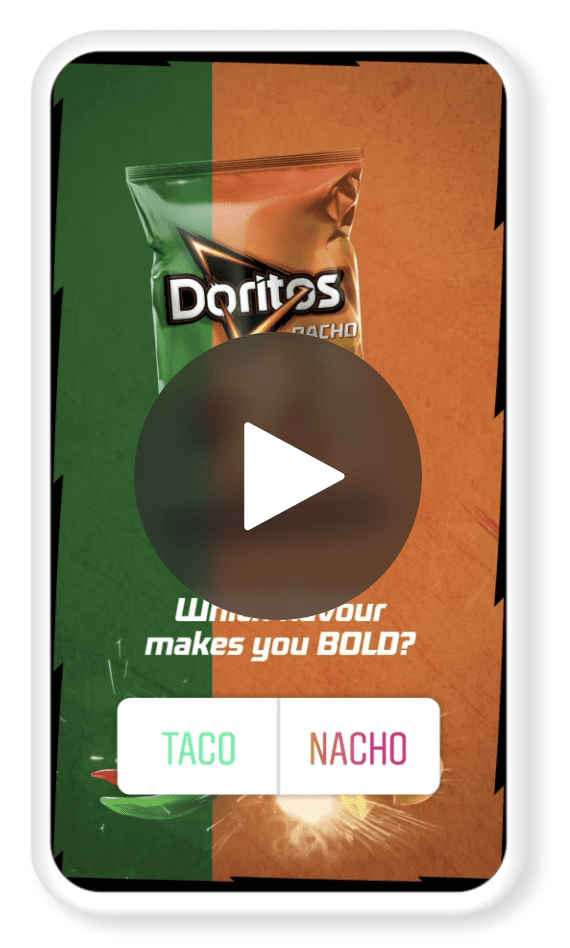
YOUR Best Advertising Strategies Will Be Revealed Over Time
Best practices are only best practices. There's no guarantee they're going to work. There's a better chance they will work though when you do the right things.
But maybe they won't.
Before you make a high bet and start an expensive Facebook ad campaign, test your hypotheses on a smaller scale first. Run a few experiments and A/B tests to see who the winner is.
Use the Facebook ad strategies we went over here as a guideline to develop your own strategy.
Because Facebook ad success relies on having a defined marketing strategy.
Outside of the mechanics, there's a lot to be said about injecting emotion, urgency, and creativity into that strategy. Creativity added to primacy is its own thrill—coming up with new ideas before anyone else.
You have 21 proven tools to design a winning Facebook ad strategy.
Try them out. Set them up, execute them, test them, and see if something new works its way into your strategy over time.
Test that and refine it.
When a pattern emerges on your graphs showing what works for your company, put more money there.
And tell us about it.
FAQs for Facebook Ad Strategies
What are some proven Facebook ad strategies to maximize my campaign performance?
To get the most out of your Facebook ad campaigns, start with these proven strategies:
- Combine Facebook Ads with Google Ads to create a full-funnel marketing approach.
- Use carousel ads and video ads to engage your target audience with interactive and visually appealing formats.
- Incorporate content marketing to warm up cold leads and create brand awareness.
- Use Facebook lead ads or collection ads to capture prospects’ information and move them into your sales funnel.
- Retarget website visitors with dynamic ads to show them products they’ve already browsed. By tailoring your ad creatives and aligning them with specific campaign objectives, you can create impactful facebook advertising campaigns.
How do I optimize ad spend and improve ROI in Facebook campaigns?
To make the most of your ad budget, follow these best practices:
- Use custom audiences and lookalike audiences to target high-potential users while minimizing wasted ad spend.
- Test different ad sets in Meta Ads Manager using A/B testing to identify the most effective formats, including mobile ads, messenger ads, and dynamic product ads.
- Optimize for specific campaign objectives like conversions or traffic.
- Leverage the Facebook Pixel (or formerly Facebook Pixel) to track visitor actions and refine your audience targeting.
- Continuously analyze your facebook analytics and refine your strategy to focus on paying customers and high-ROI segments.
What role does video play in Facebook ad strategies?
Video ads are one of the most powerful tools in facebook advertising because they:
- Grab attention quickly, especially for mobile users scrolling through their feeds.
- Help create emotional connections with potential customers by showcasing products or services in action.
- Are effective in retargeting campaigns, as facebook users who view videos are more likely to convert. For example, using dynamic video ads can significantly increase engagement and conversions. To maximize impact, tailor your ad copy and visuals to align with your audience segment.
How can I use Facebook contests and lead ads to generate leads?
Running Facebook contests and using lead ads are great ways to boost engagement and grow your audience segment:
- Facebook contests: Offer prizes to encourage user participation while increasing your facebook page visibility. For instance, you can ask users to vote on a product or share your social media posts for entry.
- Facebook lead ads: Simplify the process of capturing user information by letting users submit their details directly in the ad without leaving the social media platform. These strategies not only generate new leads but also help build stronger connections with your existing customers.
How do I tailor ads to different audience segments and platforms?
Tailoring ads to your facebook target audience is crucial for success. Here’s how:
For platforms like Facebook Stories, use vertical formats to maximize screen space and keep your content engaging.
For mobile ads, ensure your visuals and text are optimized for smaller screens, and focus on ad creatives that grab attention immediately.
Use audience targeting to create targeted ads for specific groups like blog readers, landing page visitors, or engaged blog readers.
Segment your custom audiences by behavior, such as shopping cart abandoners or repeat customers, to serve ads that address their needs.
